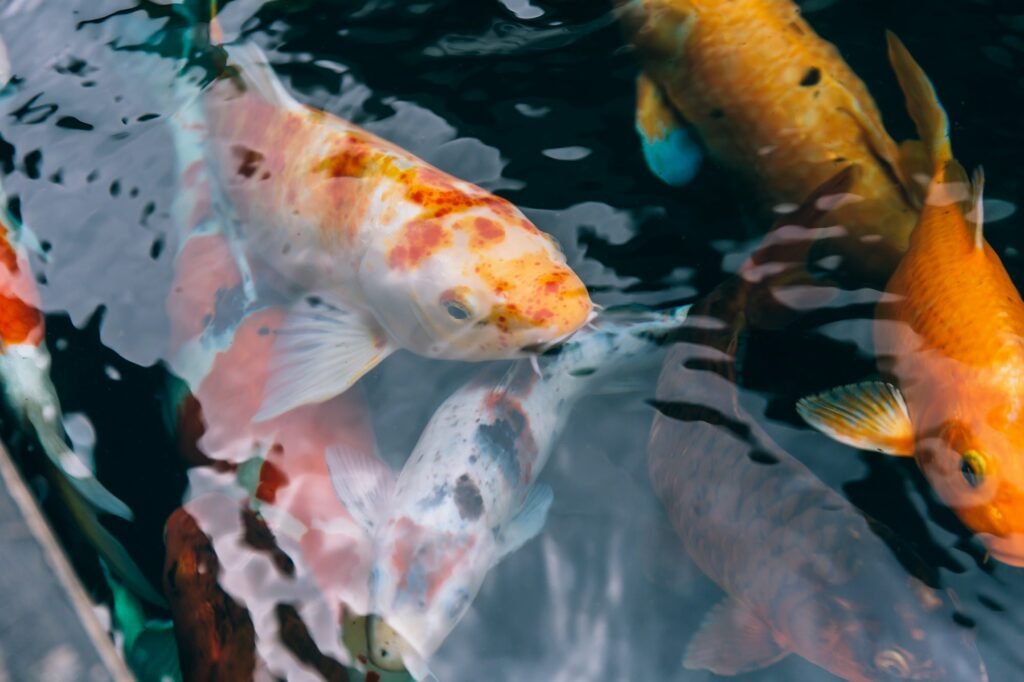Whenever I see a friend or family member asking, “How deep should a Koi pond be?” my first thought is, “What kind of koi will want to live in such a pond?”
The answer is, “Everything.”
I guess the question then becomes, “What is the right depth for your Koi pond”?
Will Koi Venture Into Deeper Pond Depths?
Whether you are considering building a fish pond or have already built one, you should be aware of the depth of your pond.
A deeper pond will add more volume to your pond, and will also allow you to accommodate larger koi. Choosing the correct pond depth will help you ensure that your fish have a healthy and safe environment to live in.
The average pond depth is around 1.9 meters. The water should be at least three feet deep to allow koi to thrive. A pond that is too shallow will not provide the proper oxygenation and sunlight that koi need to grow.
Several factors can cause koi to remain near the bottom of a pond. This can be caused by cold surface temperatures, predators, or a lack of sufficient oxygen. However, there are a few ways to keep your koi from swimming to the bottom of your pond.

You can install de-icers on your pond to keep the temperature down to 40 °F. There are even sensors that will shut off the de-icer once the water reaches that temperature. This is an excellent option for preventing thick ice from forming in winter.
It is important to check the pH of your pond periodically, as high CO2 levels can lead to a buildup of carbonic acid. This can cause your koi to fall ill.
Additional Koi Pond Depth Considerations
Having the proper pond depth is important for koi. It helps to ensure that the koi are well-protected from predators. It also prevents the pond from freezing in cold weather.
If you live in an area where it gets cold, you may want to build a deeper pond. This will provide refuge for the koi during the winter months. In addition, it will protect them from sudden changes in the environment.
You should also check the USDA Hardiness Zone Map to determine if your area is suitable for koi. The map breaks North America into eleven different zones. Each zone is 10 deg F colder or warmer than the next.
If you’re planning on having a koi pond in a colder climate, you’ll need a deeper pond. Shallow ponds freeze easily. The ice can lead to a reduction in oxygen in the water, which is not a good thing for koi.
A deeper pond will also require more filters and pumps. Depending on the size of your pond, it could also require a heating system.
Having the proper pond depth will help you avoid parasites, infections, and other health problems. This is because the koi will be able to move more freely.
If you aren’t sure if your pond needs a deeper depth, you can use a pond size calculator. This will give you an idea of how many gallons your pond will need.
What Depth Do Koi Carp Prefer?
Choosing the right depth for your Koi is an important decision. Deeper ponds will help ensure your fish remain warm and happy in the winter. If you live in a colder climate, a depth of 2 feet is a good bet. The water at the bottom is always warmer than at the top.

The best depth for your pond will vary from region to region. The average pond is about 65,91 cm long and holds about 100,000 liters of water. It is not uncommon for Japanese enthusiasts to have shallow ponds.
There are many ponds out there, but choosing the best one for your koi might be a bit of a pain. The best way to go about this is to get the advice of a pro. They will have the knowledge and experience to guide you through the pitfalls of pond construction. If your budget allows, you may want to invest in a prefabricated pond. These are stocked with the best fish and come with all the bells and whistles. They also have the benefit of being premade, which saves you from the snags that accompany building your own pond.
The bottom line is that the best pond for your koi is the one that’s right for your family. With a little planning and consideration, your pond can be the centerpiece of your backyard.

